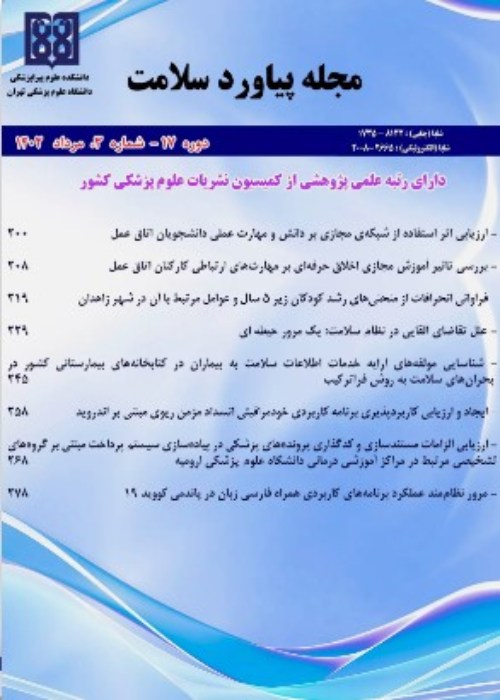Factors Related to Infection and Hospitalization of Covid-19, Results of the Participants of the Ravansar Non-Communicable Diseases Cohort Study in Kermanshah Province
All people living in a society are not equally at risk of COVID-19 infection and hospitalization. The current study is aimed to determine the factors related to COVID-19 infection and hospitalization among participants of Ravansar Non-Communicable Disease (RaNCD) cohort study.
The present study was conducted between 28th February, 2020 to 27th November, 2021. Data from the RaNCD study, morbidity and hospitalizations cases (extracted from the medical care monitoring system, SAMA system and the handwritten list of the health department) and positive serological results were used. For the case-cohort study, 626 confirmed and/or probable cases and 2107 randomly selected participants as sub-cohort were recruited. For the case-control study, 188 COVID-19 hospitalized patients from RaNCD (as cases) and 632 positive outpatients identified as controls. Data were analyzed using Cox and logistic regression, respectively.
In case-cohort study, the hazard ratio of COVID-19 among people living in rural areas, in smokers and those in middle socioeconomic status was, 0.37 (0.24, 0.58), 1.50 (1.07, 2.11), as compared to the reference groups. While the hazard ratio of people aged 46-64 and those ≥65 years old, as compared to the reference group within the first year, was 3.47 (1.76, 6.86) and 6.45 (2.80, 14.85), the corresponding value after one year was 2.23 (1.13, 4.40) and 3.52 (1.53, 8.10), respectively. The hazard ratio among those with at least one comorbidity was 2.45 (1.53, 3.92) in the first year of study and after one year decreased to 1.82 (1.14, 2.92). In addition, moderate and vigorous physical activity decreased the hazard ratio. In case-control study the odds ratio of hospitalization increased by 0.03% (1.03(1.01, 1.05)) with an increase of one year in age and in people with at least three comorbidities was 2.43 (1.24, 4.73) times of those without comorbidity.
Overall, one year after starting the study the decrease in hazard ratio of COVID-19 was significant. Increase in age and having comorbidities are factors that increased the odds ratio of hospitalization. Such people can be considered for the next waves of COVID-19 prioritized for health care and booster vaccination.
- حق عضویت دریافتی صرف حمایت از نشریات عضو و نگهداری، تکمیل و توسعه مگیران میشود.
- پرداخت حق اشتراک و دانلود مقالات اجازه بازنشر آن در سایر رسانههای چاپی و دیجیتال را به کاربر نمیدهد.


